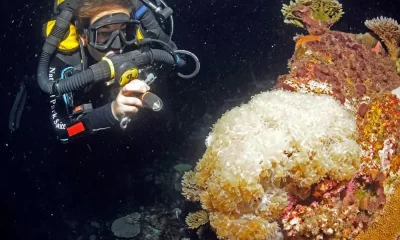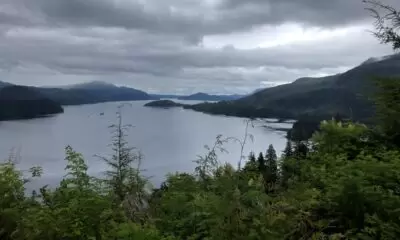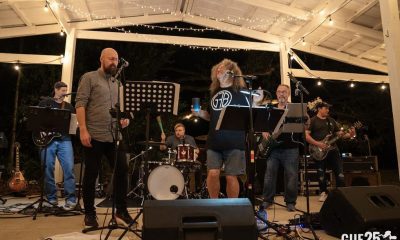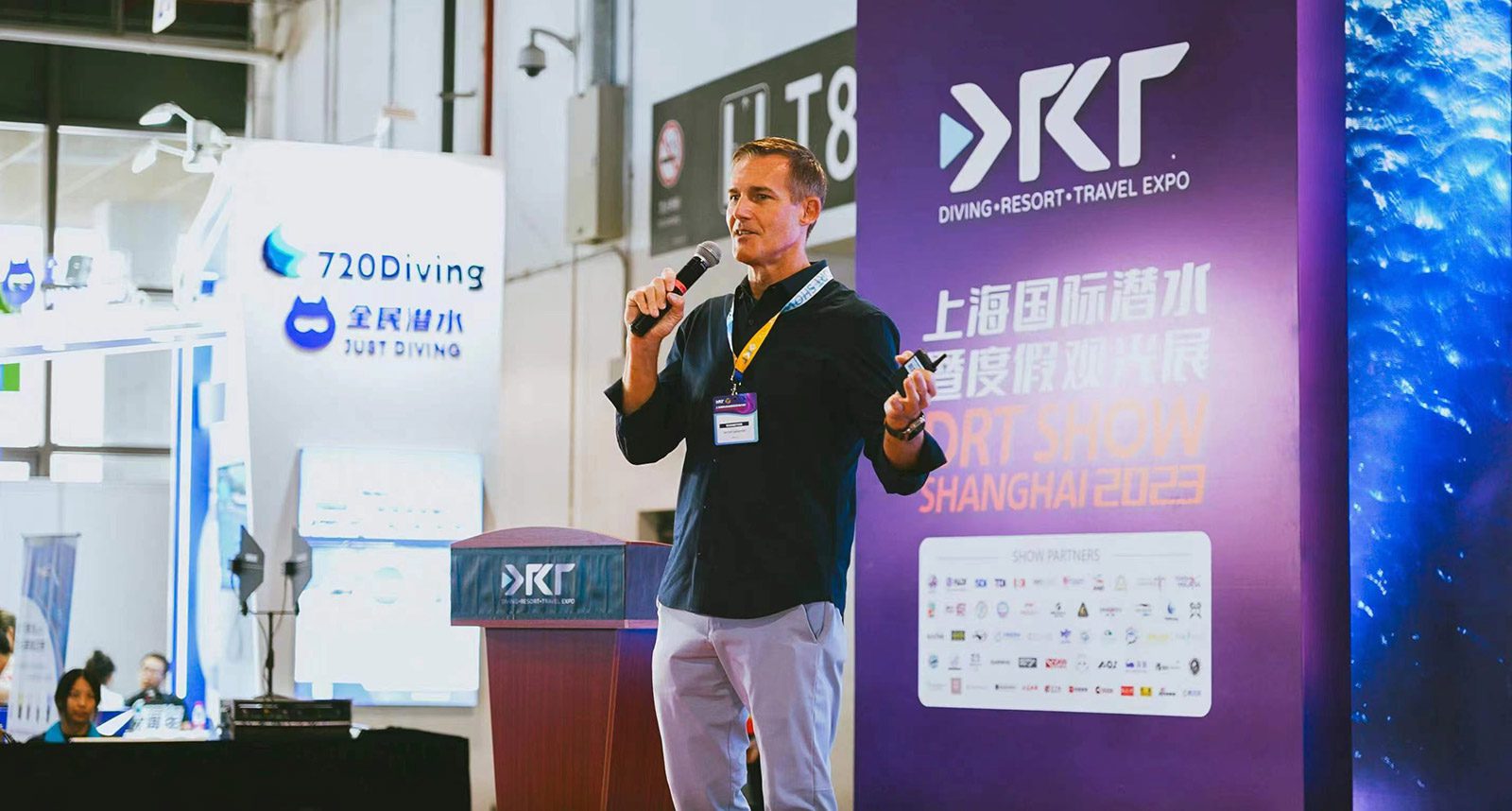
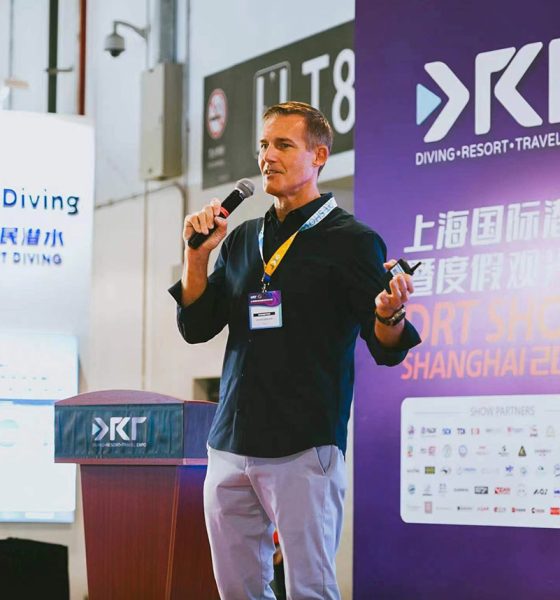
Community
Twenty-five Years in the Pursuit of Excellence – The Evolution and Future of GUE
Founder and president Jarrod Jablonski describes his more than a quarter of a century long quest to promote excellence in technical diving.
by Jarrod Jablonski. Images courtesy of J. Jablonski and GUE unless noted.
The most difficult challenges we confront in our lives are the most formative and are instrumental in shaping the person we become. When I founded Global Underwater Explorers (GUE), the younger version of myself could not have foreseen all the challenges I would face, but equally true is that he would not have known the joy, the cherished relationships, the sense of purpose, the rich adventures, the humbling expressions of appreciation from those impacted, or the satisfaction of seeing the organization evolve and reshape our industry. Many kindred souls and extraordinary events have shaped these last 25 years, and an annotated chronology of GUE is included in this issue of InDEPTH. This timeline, however, will fail to capture the heart behind the creation of GUE, it will miss the passionate determination currently directing GUE, or the committed dedication ready to guide the next 25 years.
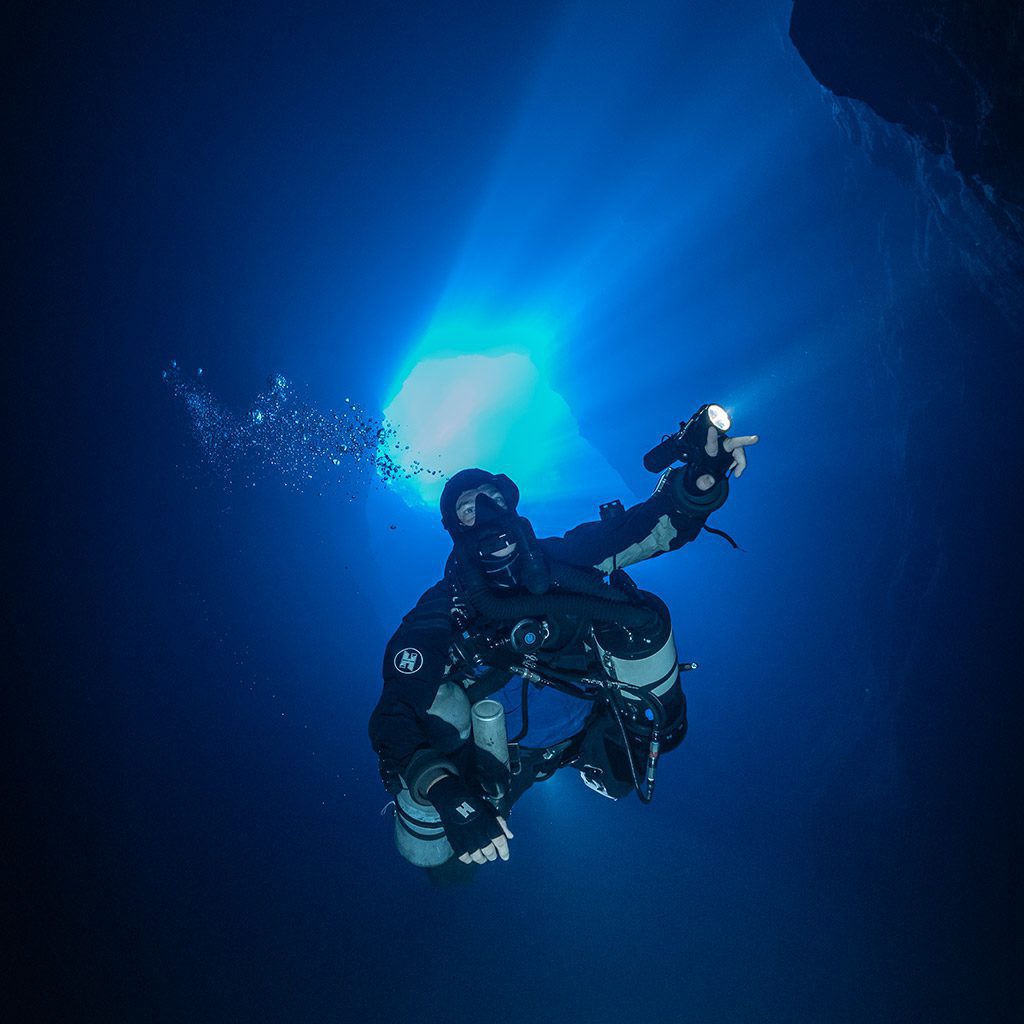
I don’t remember a time that I was not in, around, and under the water. Having learned to swim before I could walk, my mother helped infuse a deep connection to the aquatic world. I was scuba certified in South Florida with my father, and promptly took all our gear to North Florida where I became a dive instructor at the University of Florida. It was then that I began my infatuation with cave diving. I was in the perfect place for it, and my insatiable curiosity was multiplied while exploring new environments. I found myself with a strong desire to visit unique and hard-to-reach places, be they far inside a cave or deep within the ocean.
My enthusiasm for learning was pressed into service as an educator, and I became enamored with sharing these special environments. Along with this desire to share the beauty and uniqueness of underwater caves was a focused wish to assist people in acquiring the skills I could see they needed to support their personal diving goals. It could be said that these early experiences were the seeds that would germinate, grow, mature, and bloom into the organizing principles for GUE.
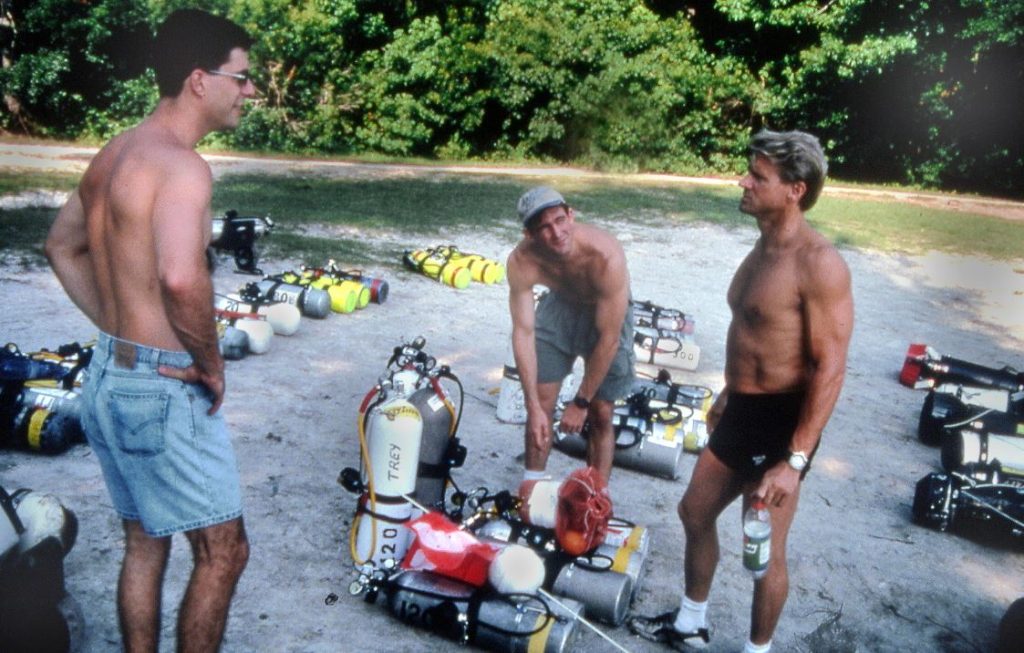
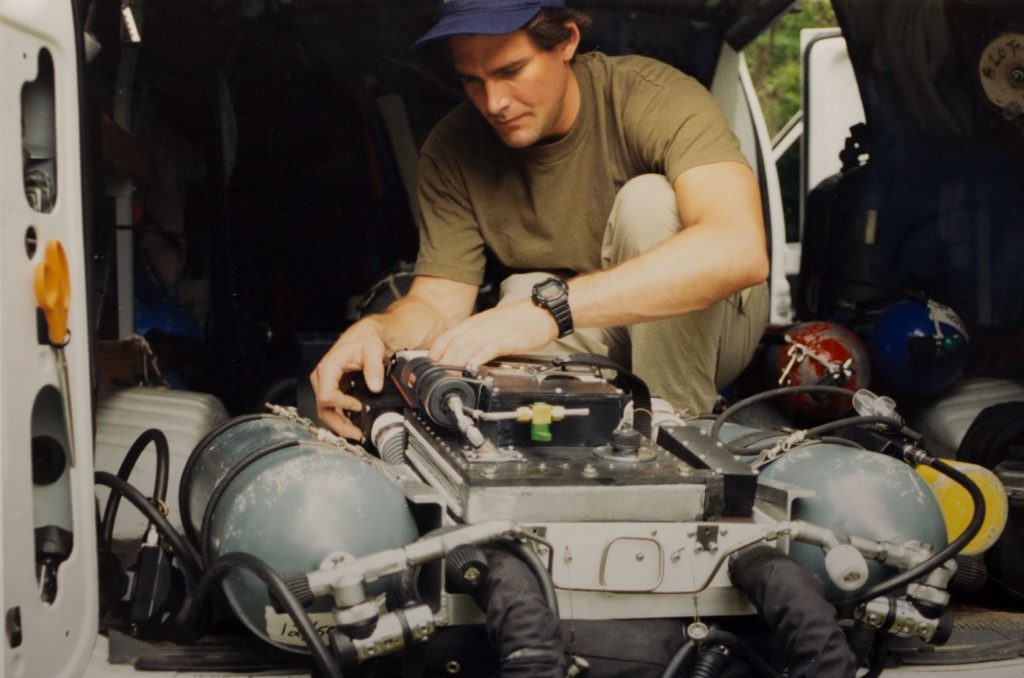
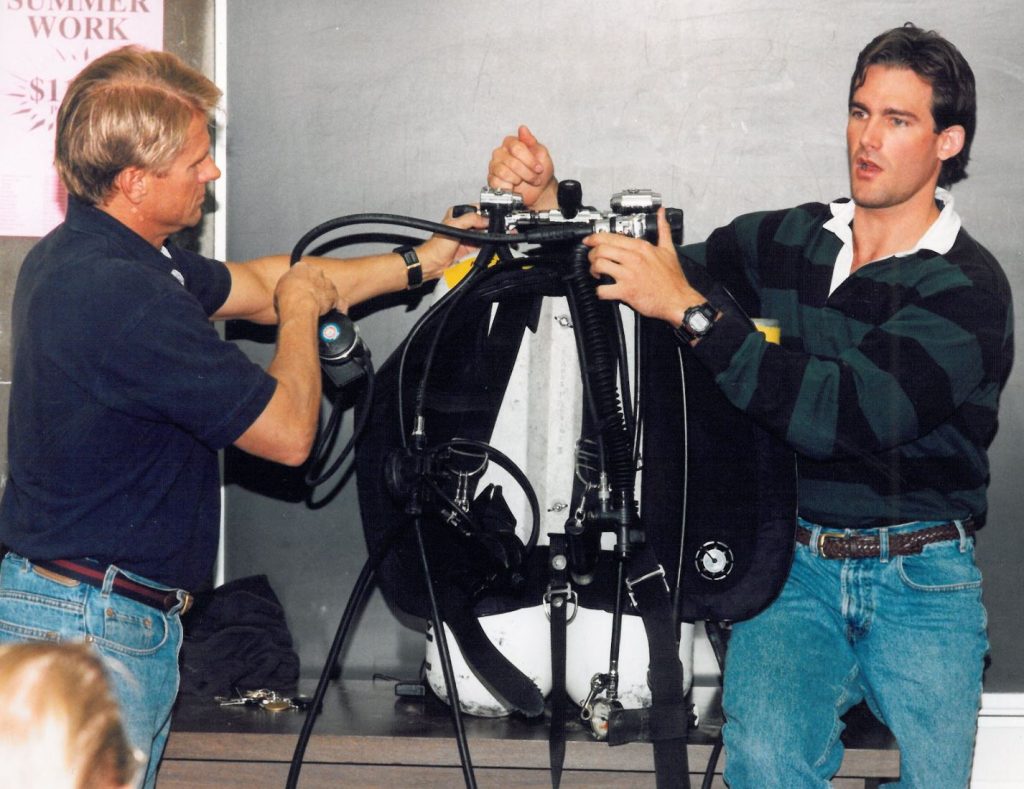
The Pre-GUE Years
Before jumping into the formational days of GUE, allow me to help you visualize the environment that was the incubator for the idea that became GUE’s reality. By the mid-1990s, I was deeply involved in a variety of exploration activities and had been striving to refine my own teaching capacity alongside this growing obsession for exploratory diving. While teaching my open water students, I was in the habit of practicing to refine my own trim and buoyancy, noticing that the students quickly progressed and were mostly able to copy my position in the water. Rather than jump immediately into the skills that were prescribed, I started to take more time to refine their comfort and general competency. This subtle shift made a world of difference in the training outcomes, creating impressive divers with only slightly more time and a shift in focus. In fact, the local dive boats would often stare in disbelief when told these divers were freshly certified, saying they looked better than most open water instructors!
By this point in my career, I could see the problems I was confronting were more systemic and less individualistic. In retrospect, it seemed obvious that key principles had been missing in both my recreational and technical education, not to mention the instructor training I received. The lack of basic skill refinement seemed to occur at all levels of training, from the beginner to the advanced diver. Core skills like buoyancy or in-water control were mainly left for divers to figure out on their own and almost nobody had a meaningful emphasis on efficient movement in the water. It was nearly unheard of to fail people in scuba diving, and even delaying certification for people with weak skills was very unusual. This remains all too common to this day, but I believe GUE has shifted the focus in important ways, encouraging people to think of certification more as a process and less as a right granted to them because they paid for training.

The weakness in skill refinement during dive training was further amplified by little-to-no training in how to handle problems when they developed while diving, as they always do. In those days, even technical/cave training had very little in the way of realistic training in problem resolution. The rare practice of failures was deeply disconnected from reality. For example, there was almost no realistic scenario training for things like a failed regulator or light. What little practice there was wasn’t integrated into the actual dive and seemed largely useless in preparing for real problems. I began testing some of my students with mock equipment failures, and I was shocked at how poorly even the best students performed. They were able to quickly develop the needed skills, but seeing how badly most handled their first attempts left me troubled about the response of most certified divers should they experience problems while diving, as they inevitably would.
Diving Fatalities
Meanwhile, I was surrounded by a continual progression of diving fatalities, and most appeared entirely preventable. The loss of dear friends and close associates had a deep impact on my view of dive training and especially on the procedures being emphasized at that time within the community. The industry, in those early days, was wholly focused on deep air and solo diving. However, alarmingly lacking were clear bottle marking or gas switching protocols. It seemed to me to be no coincidence that diver after diver lost their lives simply because they breathed the wrong bottle at depth. Many others died mysteriously during solo dives or while deep diving with air.
One of the more impactful fatalities was Bob McGuire, who was a drill sergeant, friend, and occasional dive buddy. He was normally very careful and focused. One day a small problem with one regulator caused him to switch regulators before getting in the water. He was using a system that used color-coded regulators to identify the gas breathed. When switching the broken regulator, he either did not remember or did not have an appropriately colored regulator. This small mistake cost him his life. I clearly remember turning that one around in my head quite a bit. Something that trivial should not result in the loss of a life.
Also disturbing was the double fatality of good friends, Chris and Chrissy Rouse, who lost their lives while diving a German U-boat in 70 m/230 ft of water off the coast of New Jersey. I remember, as if the conversation with Chris were yesterday, asking him not to use air and even offering to support the cost as a counter to his argument about the cost of helium. And the tragedies continued: The loss of one of my closest friends Sherwood Schille, the death of my friend Steve Berman who lived next to me and with whom I had dived hundreds of times, the shock of losing pioneering explorer Sheck Exley, the regular stream of tech divers, and the half dozen body recoveries I made over only a couple years, which not only saddened me greatly, but also made me angry. Clearly, a radically different approach was needed.
Learning to Explore
Meanwhile, my own exploration activities were expanding rapidly. Our teams were seeking every opportunity to grow their capability while reducing unnecessary risk. To that end, we ceased deep air diving and instituted a series of common protocols with standardized equipment configurations, both of which showed great promise in expanding safety, efficiency, and comfort. We got a lot of things wrong and experienced enough near misses to keep us sharp and in search of continual improvement.

But we looked carefully at every aspect of our diving, seeking ways to advance safety, efficiency, and all-around competency while focusing plenty of attention into the uncommon practice of large-scale, team diving, utilizing setup dives, safety divers, and inwater support. We developed diver propulsion vehicle (DPV) towing techniques, which is something that had not been done previously. We mostly ignored and then rewrote CNS oxygen toxicity calculations, developed novel strategies for calculating decompression time, and created and refined standard procedures for everything from bottle switching to equipment configurations. Many of these developments arose from simple necessity. There were no available decompression programs and no decompression tables available for the dives we were doing. Commonly used calculations designed to reduce the risk of oxygen toxicity were useless to our teams, because even our more casual dives were 10, 20, or even 30 times the allowable limit. The industry today takes most of this for granted, but in the early days of technical diving, we had very few tools, save a deep motivation to go where no one had gone before.
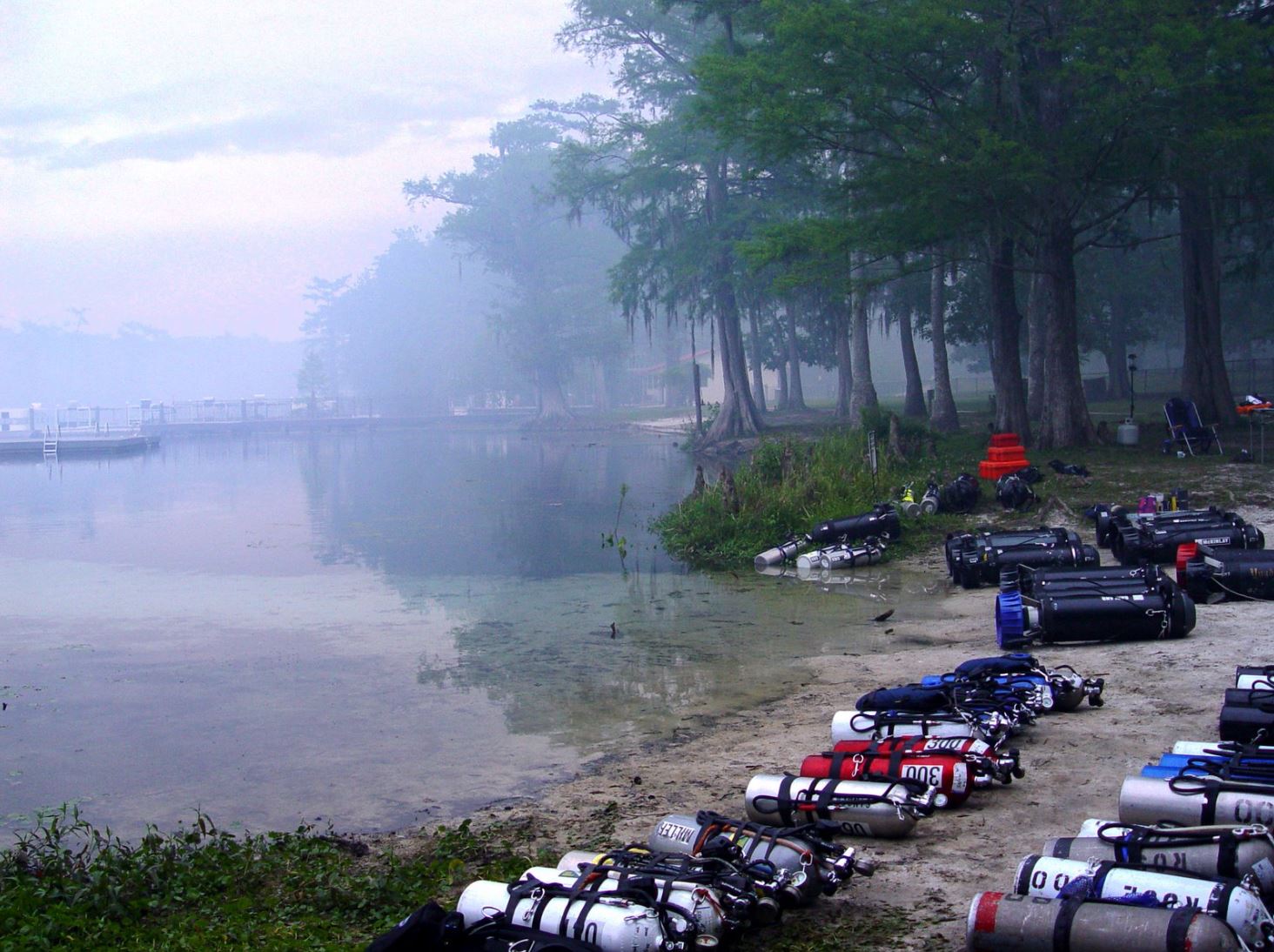
Many of these adventures included friends in the Woodville Karst Plain Project (WKPP), where I refined policies within the team and most directly with longtime dive buddy George Irvine. This “Doing it Right” (DIR) approach sought to create a more expansive system than Hogarthian diving, which itself had been born in the early years of the WKPP and was named after William Hogarth Main, a friend and frequent dive buddy of the time. By this point, I had been writing about and expanding upon Hogarthian diving for many years. More and more of the ideas we wanted to develop were not Bill Main’s priorities and lumping them into his namesake became impractical, especially given all the debate within the community over what was and was not Hogarthian.
A similar move from DIR occurred some years later when GUE stepped away from the circular debates that sought to explain DIR and embraced a GUE configuration with standard protocols, something entirely within our scope to define.
These accumulating events reached critical mass in 1998. I had experienced strong resistance to any form of standardization, even having been asked to join a special meeting of the board of directors (BOD) for a prominent cave diving agency. Their intention was to discourage me from using any form of standard configuration, claiming that students should be allowed to do whatever they “felt’ was best. It was disconcerting for me, as a young instructor, to be challenged by pioneers in the sport; nevertheless, I couldn’t agree with the edict that someone who was doing something for the first time should be tasked with determining how it should be done.
This sort of discussion was common, but the final straw occurred when I was approached by the head of a technical diving agency, an organization for which I had taught for many years. I was informed that he considered it a violation of standards not to teach air to a depth of at least 57 m/190 ft. This same individual told me that I had to stop using MOD bottle markings and fall in line with the other practices endorsed by his agency. Push had finally come to shove, and I set out to legitimize the training methods and dive protocols that had been incubating in my mind and refined with our teams over the previous decade. Years of trial and many errors while operating in dynamic and challenging environments were helping us to identify what practices were most successful in support of excellence, safety, and enjoyment.
Forming GUE
Forming GUE as a non-profit company was intended to neutralize the profit motivations that appeared to plague other agencies. We hoped to remove the incentive to train—and certify—the greatest number of divers as quickly as possible because it seemed at odds with ensuring comfortable and capable divers. The absence of a profit motive complemented the aspirational plans that longtime friend Todd Kincaid and I had dreamed of. We imagined a global organization that would facilitate the efforts of underwater explorers while supporting scientific research and conservation initiatives.
I hoped to create an agency that placed most of the revenue in the hands of fully engaged and enthusiastic instructors, allowing them the chance to earn a good living and become professionals who might stay within the industry over many years. Of course, that required forgoing the personal benefit of ownership and reduced the revenue available to the agency, braking its growth and complicating expansion plans. This not only slowed growth but provided huge challenges in developing a proper support network while creating the agency I envisioned. There were years of stressful days and nights because of the need to forgo compensation and the deep dependance upon generous volunteers who had to fit GUE into their busy lives. If it were not for these individuals and our loyal members, we would likely never have been successful. Volunteer support and GUE membership have been and remain critical to the growing success of our agency. If you are now or have ever been a volunteer or GUE member, your contribution is a significant part of our success, and we thank you.
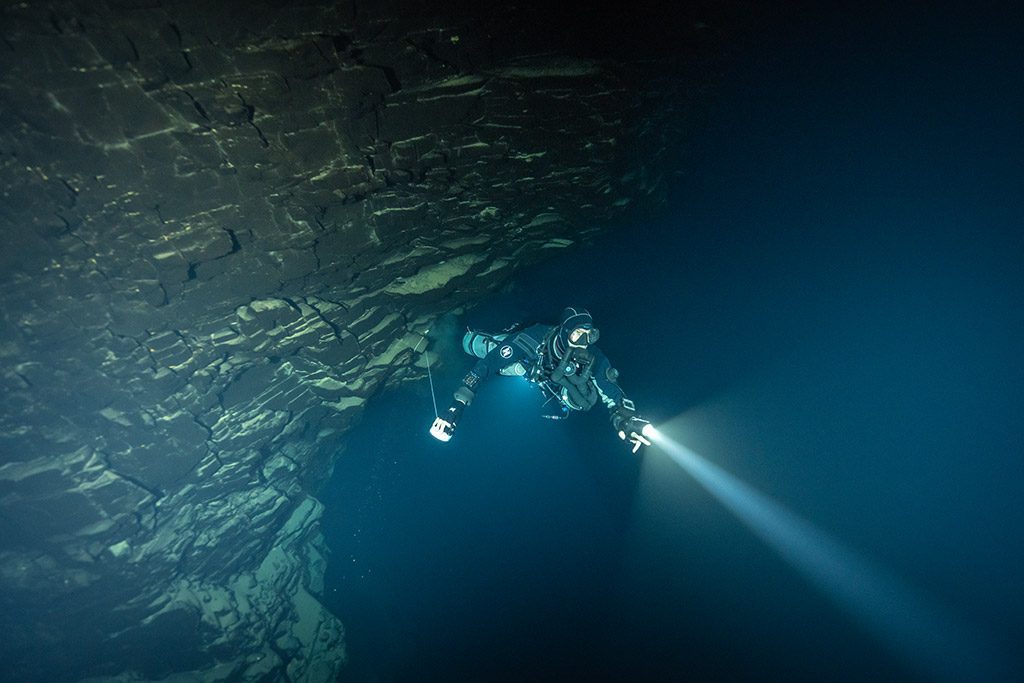
The challenges of the early years gave way to steady progress—always slower than desired, with ups and downs, but progress, nonetheless. Some challenges were not obvious at the outset. For example, many regions around the world were very poorly developed in technical diving. Agencies intent on growth seemed to ignore that problem, choosing whoever was available, and regardless of their experience in the discipline, they would soon be teaching.
This decision to promote people with limited experience became especially problematic when it came to Instructor Trainers. People with almost no experience in something like trimix diving were qualifying trimix instructors. Watching this play out in agency after agency, and on continent after continent, was a troubling affair. Conversely, it took many years for GUE to develop and train people of appropriate experience, especially when looking to critical roles, including high-level tech and instructor trainers. At the same time, GUE’s efforts shaped the industry in no small fashion as agencies began to model their programs after GUE’s training protocols. Initially, having insisted that nobody would take something like Fundamentals, every agency followed suit in developing their own version of these programs, usually taught by divers that had followed GUE training.
This evolving trend wasn’t without complexity but was largely a positive outcome. Agencies soon focused on fundamental skills, incorporated some form of problem-resolution training, adhered to GUE bottle and gas switching protocols, reduced insistence on deep air, and started talking more about developing skilled divers, among other changes. This evolution was significant when compared to the days of arguing about why a person could not learn to use trimix until they were good while diving deep on air.
To be sure, a good share of these changes was more about maintaining business relevance than making substantive improvements. The changes themselves were often more style than substance, lacking objective performance standards and the appropriate retraining of instructors. Despite these weaknesses, they remain positive developments. Talking about something is an important first step and, in all cases, it makes room for strong instructors in any given agency to practice what is being preached. In fact, these evolving trends have allowed GUE to now push further in the effort to create skilled and experienced divers, enhancing our ability to run progressively more elaborate projects with increasingly more sophisticated outcomes.
The Future of GUE
The coming decades of GUE’s future appear very bright. Slow but steady growth has now placed the organization in a position to make wise investments, ensuring a vibrant and integrated approach. Meanwhile, evolving technology and a broad global base place GUE in a unique and formidable position. Key structural and personnel adjustments complement a growing range of virtual tools, enabling our diverse communities and representatives to collaborate and advance projects in a way that, prior to now, was not possible. Strong local communities can be easily connected with coordinated global missions; these activities include ever-more- sophisticated underwater initiatives as well as structural changes within the GUE ecosystem. One such forward-thinking project leverages AI-enabled, adaptive learning platforms to enhance both the quality and efficiency of GUE education. Most agencies, including GUE, have been using some form of online training for years, but GUE is taking big steps to reinvent the quality and efficiency of this form of training. This is not to replace, but rather to extend and augment inwater and in-person learning outcomes. Related tools further improve the fluidity, allowing GUE to seamlessly connect previously distant communities, enabling technology, training, and passion to notably expand our ability to realize our broad, global mission.

Meanwhile, GUE and its range of global communities are utilizing evolving technologies to significantly expand the quality and scope of their project initiatives. Comparing the impressive capability of current GUE communities with those of our early years shows a radical and important shift, allowing results equal or even well beyond those possible when compared even with well-funded commercial projects. Coupled with GUE training and procedural support, these ongoing augmentations place our communities at the forefront of underwater research and conservation. This situation will only expand and be further enriched with the use of evolving technology and closely linked communities. Recent and planned expansions to our training programs present a host of important tools that will continue being refined in the years to come. Efforts to expand and improve upon the support provided to GUE projects with technology, people, and resources are now coming online and will undoubtedly be an important part of our evolving future.
The coming decades will undoubtedly present challenges. But I have no doubt that together we will not only overcome those obstacles but we will continue to thrive. I believe that GUE’s trajectory remains overwhelmingly positive, for we are an organization that is continually evolving—driven by a spirit of adventure, encouraged by your heartwarming stories, and inspired by the satisfaction of overcoming complex problems. Twenty-five years ago, when I took the path less traveled, the vision I had for GUE was admittedly ambitious. The reality, however, has exceeded anything I could have imagined. I know that GUE will never reach a point when it is complete but that it will be an exciting lifelong journey, one that, for me, will define a life well lived. I look forward our mutual ongoing “Quest for Excellence.”
See Listings Below For Additional Resources On GUE And GUE Diving!
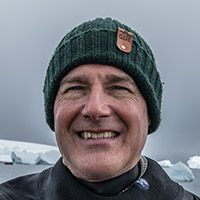
Jarrod is an avid explorer, researcher, author, and instructor who teaches and dives in oceans and caves around the world. Trained as a geologist, Jarrod is the founder and president of GUE and CEO of Halcyon and Extreme Exposure while remaining active in conservation, exploration, and filming projects worldwide. His explorations regularly place him in the most remote locations in the world, including numerous world record cave dives with total immersions near 30 hours. Jarrod is also an author with dozens of publications, including three books.
A Few GUE Fundamentals
Similar to military, commercial and public safety divers, Global Underwater Explorers (GUE) is a standards-based diving community, with specific protocols, standard operating procedures (SOPs) and tools. Here are selected InDEPTH stories on some of the key aspects of GUE diving, including a four-part series on the history and development of GUE decompression procedures by founder and president Jarod Jablonski.

Anatomy of a Fundamentals Class
GUE Instructor Examiner Guy Shockey explains the thought and details that goes into GUE’s most popular course, Fundamentals, aka “Fundies,” which has been taken by numerous industry luminaries. Why all the fanfare? Shockey characterizes the magic as “simple things done precisely!

Back to Fundamentals: An Introduction to GUE’s Most Popular Diving Course
Instructor evaluator Rich Walker attempts to answer the question, “why is Fundamentals GUE’s most popular diving course?” Along the way, he clarifies some of the myths and misconceptions about GUE training. Hint: there is no Kool-Aid.

As you’d expect, Global Underwater Explorers (GUE) has a standardized approach to prepare your equipment for the dive, and its own pre-dive checklist: the GUE EDGE. Here explorer and filmmaker Dimitris Fifis preps you to take the plunge, GUE-style.

The Flexibility of Standard Operating Procedures
Instructor trainer Guy Shockey discusses the purpose, value, and yes, flexibility of standard operating procedures, or SOPs, in diving. Sound like an oxymoron? Shockey explains how SOPs can help offload some of our internal processing and situational awareness, so we can focus on the important part of the dive—having FUN!

Standard Gases: The Simplicity of Everyone Singing the Same Song
Like the military and commercial diving communities before them, Global Underwater Explorers (GUE) uses standardized breathing mixtures for various depth ranges and for decompression. Here British wrecker and instructor evaluator Rich Walker gets lyrical and presents the reasoning behind standard mixes and their advantages, compared with a “best mix” approach. Don’t worry, you won’t need your hymnal, though Walker may have you singing some blues.

Rules of Thumb: The Mysteries of Ratio Deco Revealed
Is it a secret algorithm developed by the WKPP to get you out of the water faster sans DCI, or an unsubstantiated decompression speculation promoted by Kool-Aid swilling quacks and charlatans? British tech instructor/instructor evaluator Rich Walker divulges the arcane mysteries behind GUE’s ratio decompression protocols in this first of a two part series.

The Thought Process Behind GUE’s CCR Configuration
Global Underwater Explorers is known for taking its own holistic approach to gear configuration. Here GUE board member and Instructor Trainer Richard Lundgren explains the reasoning behind its unique closed-circuit rebreather configuration. It’s all about the gas!

GUE and the Future of Open Circuit Tech Diving
Though they were late to the party, Global Underwater Explorers (GUE) is leaning forward on rebreathers, and members are following suit. So what’s to become of their open circuit-based TECH 2 course? InDepth’s Ashley Stewart has the deets.

Diving projects, or expeditions—think Bill Stone’s Wakulla Springs 1987 project, or the original explorations of the Woodville Karst Plain’s Project (WKPP)—helped give birth to technical diving, and today continue as an important focal point and organizing principle for communities like Global Underwater Explorers (GUE). The organization this year unveiled a new Project Diver program, intended to elevate “community-led project dives to an entirely new level of sophistication.” Here, authors Guy Shockey and Francesco Cameli discuss the power of projects and take us behind the scenes of the new program

Decompression, Deep Stops and the Pursuit of Precision in a Complex World In this first of a four-part series, Global Underwater Explorers’ (GUE) founder and president Jarrod Jablonski explores the historical development of GUE decompression protocols, with a focus on technical diving and the evolving trends in decompression research.




















